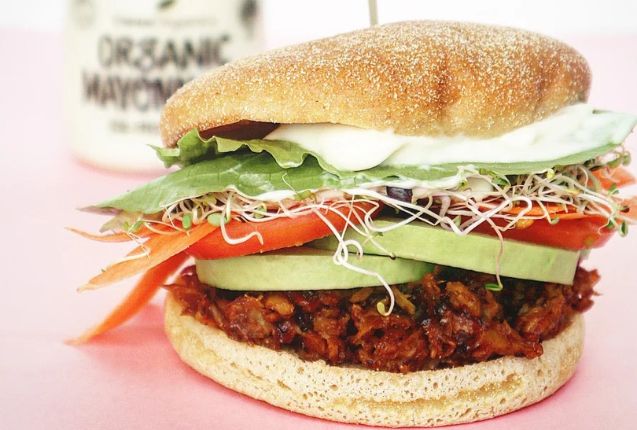United Fresh has over 30 years of experience supporting and promoting the New Zealand fresh produce industry, working with the entire value chain, from seed producer and grower to consumer, providing leadership on pan-produce issues.
This is their fifth Trend Report for New Zealand.
Two years into a global pandemic and many Kiwi consumers will be wondering just what 2022 holds in store for us all. There is no question that the world has changed immensely and many of our daily habits have changed along with it. But has the way we get our daily bread or pro-biotic kombucha really evolved that much, or are we showing resilience in the face of grocery aisle adversity?
Our nation’s supermarkets and small retailers have noted several shifts in consumer behaviour, which have shaped our pick of the top trends to watch for in 2022.
The Great Grocery Edit
Fresh from the ‘Great Resignation’, shoppers in 2022 are expected to review their consumption habits in light of changing views about materialism.
The global pandemic forced millions around the world to re-evaluate their life choices. Along with reduced supply and the threat of inflation, many shoppers will intentionally quit brands and rewrite their shopping lists to align with their personal values.
How brands navigate their communication with their community will be critical to retaining shoppers for whom the principle will be more important than the price, and those who will be asking themselves – ‘do I really need this’.
Do the Moringa
Move over matcha and turmeric, moringa is the latest superfood coming to a hip café near you. Also known as drumstick tree, horseradish tree or just ‘miracle leaf’, moringa originated in India and has been used for centuries as a medicinal herb.
The leaves are so incredibly nutritious that the World Health Organisation has hailed their potential to fight malnutrition as they contain a huge dose of both Vitamin C and Potassium.
Like its predecessors matcha and turmeric, moringa is now available in powdered form to add to smoothies or sauces, but the herb is expected to become a common ingredient in a range of grocery products over the next 12 months.
Pantry to plate
The perfect storm of inflation, supply chain chaos, dining restrictions and all that time spent in lockdown experimenting with sourdough and banana bread will mean more adventurous home-cooking in 2022.
Making the most out of the ingredients we have on hand, just like our grandmothers did, means avoiding the supermarket, eating the freshest seasonal fruit and vegetables, reducing waste and getting creative with limited ingredients. Expect to see influencers and food columnists exploring the myriad of delights we can whip up with just a can or sardines and a few stray carrots.
Nutritious and bubblicious
Alcohol-free, sugar-free, carb-free and pro-biotic, our drinks are getting a facelift in 2022. The popularity of kombucha is set to open up a wave of pro-biotic options such as kefir and switchel taking more space in the supermarket than traditional soft drinks.
The connection between gut health and lung function has come into the spotlight overseas as COVID-19 patients looked for products to alleviate symptoms of the disease, especially the debilitating effects of long-COVID. Fresh juice and smoothies made with locally grown, seasonal fruit and vegetables will remain a popular source of nourishment.
A growing cohort of ‘sober curious’ consumers, particularly Millennials and Gen Z are driving an increase in non-alcoholic options such as alcohol-free whiskey, zero-proof botanical ‘gin’ and tropical cocktails made with ‘not rum’. A night out without the hangover has become much more attractive.
5+ A Day keeps the doctor away
There’s no doubt, we all need as many vitamins and minerals as possible to boost our natural immunity and fresh fruit and vegetables, locally grown and in season, are still the most affordable, most easily absorbed source of nutrition that we can put on the table each night.
While shoppers over 55 and young families lead the way, eating the most portions of fresh produce each day, the rest of us are catching up as we explore new ways to stay healthy and choose diets high in fruit and vegetables.
In 2022 the popularity of fruit and vegetables looks set to continue as retailers explore faster, fresher and more convenient ways to get us our 5+ A Day, every day.
Pro-active eating
As we look to maximise the nutritional content of our food, products that offer additional benefits continue to rise in popularity. Plant-based snacks, bone broths, algae capsules and mushroom coffee are appearing on shopping lists as families look to add as much benefit to their food and drink as possible.
Often labelled ‘proactive eating’, this trend has been driven by both the pandemic and by a cultural change towards addressing sustainability in the food chain.
Product limits drive consumer behaviour
While many of us were shocked to see empty supermarket shelves early in 2020 as the pandemic hit, we’re now adapting to the slow realisation that this might be ‘the new normal’.
Global shipping and fluctuating labour supplies have continued to impact supply chains of everything from olive oil to ovens. Shopping restrictions such as limits on the number of an item shoppers can buy seem to be here to stay with no improvements in sight for 2022.
Learning to manage the weekly shop under these conditions has been a challenge for the average Kiwi shopper and an even greater challenge for retailers for whom managing substitution is a particularly difficult task. Despite restrictions on some products, we’re fortunate to have access to enough fresh fruit and vegetables to feed us all, with thriving horticulture ventures continuing to provide high quality nutrition throughout the year.
Reducetarianism is the new black
Forget veganism, reducetarianism is the newest ‘ism’ to hit grocery trends. Whether it’s eating less meat, less dairy, less alcohol, sugar or eggs, there’s a growing diet philosophy that reduction is the path to wellness.
Replacement products from beetroot burgers to oat mylks and alcohol-free distilled spirits are now commonplace in supermarket aisles. Expect to see an expansion of this category in 2022 as producers utilise the drive for sustainability, concerns about wellness and innovative production methods to bring more options to consumers.
Online food-shopping booms
Online shopping has become a major part of the shopping experience for New Zealanders. Growth of over 40% for supermarkets has meant that online offerings have come under pressure as demand soared.
In 2022, consumers are likely to continue avoiding the close-contact conditions at their local supermarket, driving further development of this shopping channel.
The website facilities of supermarkets and smaller grocery retailers are now in the spotlight as much as their bricks and mortar stores and, as such, are expected to be refined significantly over the next 12 months.
Investment in improving the user experience will focus on the basics such as quality search functions but will also add more features such as recipe links and social media channel integrations.
Waste not want not
Food waste is predicted to be a hot topic for consumers and lawmakers in 2022. The United Nations ranks reducing global food waste as the third most important thing we can do to stop climate change – and in New Zealand that amounts to addressing the $2.4 billion worth of food we chuck out each year.
Shoppers are expected to buy smaller amounts more often, only what they need, particularly in the fresh fruit and vegetable categories, while the industry looks to solutions such as apps to redistribute out-of-date or damaged stock items to organisations that can make use of them.
Climate activism coupled with a growing awareness of food insecurity in our communities will drive conscious consumers to consider food waste with every shop.
Source: www.unitedfresh.co.nz



